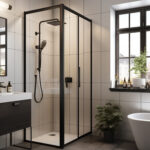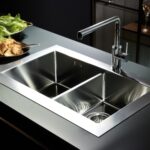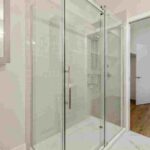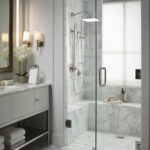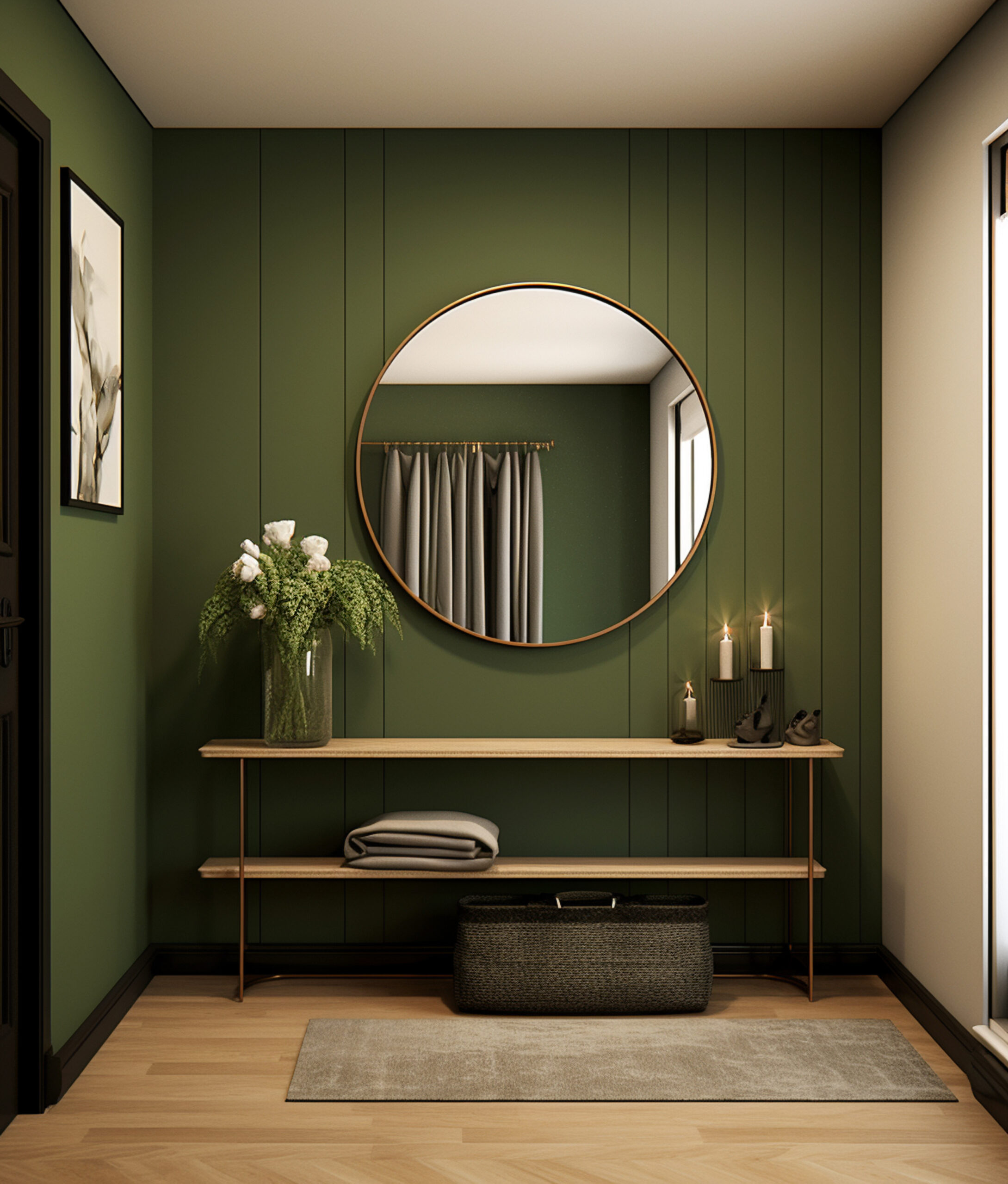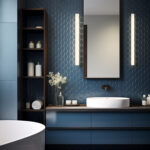There are many different materials can used for Bathtub Production. Today we are going to talk about four materials.
Stone and wood

You can custom order a bathtub from a variety of natural stone materials, including granite, marble, onyx, travertine, basalt, sandstone and other materials. These tubs are extremely heavy, and require special structural framing to support their weight.
You can also custom-order a bathtub made from teak and certain other woods. As you’d imagine, with any of these true one-of-a-kind pieces you get an unbeatable “wow factor,” but it comes with a pretty high price tag.
And, in the case of wood and some of the stones, it’s going to require a lot of maintenance in order to retain the tub’s original beauty.
Traditional and contemporary stone bathtubs sculpted from monumental blocks of marble and granite. Internationally recognized stone bathtub.Natural stone bathtubs make a one-of-a-kind focal point around which you can plan and arrange everything else up to your tastes and desires. Stone bathtubs are mostly made to order. If clients of yours decide to have rock bathtub, they definitely want it to be unique and to fit their expectations.
it’s very beautiful tub, two shortcomings, heavy and expensive 🙂
Acrylic tubs

An acrylic bathtub is made from sheets of acrylic that are vacuum-formed into a tub shape. Since these are formed over a mould, they can be virtually any type of tub style or design, from drop-in tubs to freestanding tubs. The advantages are pretty much the same as for fiberglass, although acrylic tubs are more expensive.
Disadvantages are that the finish can scratch or discolor over time, although the better grades of tub finishes have now reduced that problem to a minimum. You also have a lot of choices of shapes, sizes and colors.
Acrylic is a good all-around choice, although it may lack a certain high-end appeal for some people.
Variety of Shapes and Sizes
Because acrylic comes in sheets that are soft and malleable, acrylic bathtubs come in a large variety of shapes, sizes, and colors. Whether you are planning a small functional bathroom or a large spa-like setting, this wide assortment of tub styles can increase your options when designing a bathroom.
Heat Retaining Properties
Acrylic bathtubs have a smooth nonporous surface. The surface is warm to the touch in normal temperatures and has very good heat-retaining properties, keeping water warm for a longer time than some other bathtub materials. For a homeowner who enjoys soaking in a hot tub, this can be an important advantage.
Scratches Easily
An acrylic surface is quite soft and can scratch easily. For this reason, abrasive cleaners should not be used on acrylic tubs. While the fact that the surface scratches easily is a disadvantage, it can also be an advantage because the scratches can often be polished out or filled with acrylic. Other types of tub surfaces chip instead of scratch, making them more difficult to repair than acrylic.
Not Rigid
The surface of an acrylic bathtub is relatively soft and not very rigid. Acrylic tubs can be reinforced with fiberglass, which will increase durability and rigidity but will also increase the price of the tub. Budget acrylic tubs have little reinforcement and can feel quite flimsy when installed, so it may be worth paying the extra cost to purchase one of higher quality products with fiberglass reinforcement.
Good point is very economical choice!
Cast Iron

If you’re looking for a material that will last, this would be it. Cast iron tubs are made by pouring molten iron into a mould of the desired shape, then smoothing it and coating it with a thick layer of enamel.
It’s probably the most durable tub available, and the finish is resistant to chipping, scratching and denting, as well as most
On the downside, these tubs are extremely heavy and require extra labour — and often extra floor reinforcement — to install. They’re also typically going to be among the most expensive tubs on the market.
Advantages
Cast iron bathtubs are extremely strong and durable which means that choosing one will last you for many years to come.
These baths have the ability to retain heat which will keep your bath water warm for long periods of time.
Cast iron is extremely difficult to damage and cannot be easily scratched, cracked or dented.
These bathtubs are available in a wide selection of designs including the stylish cast iron tubs and the single or double ended slipper tub which is spacious enough for two.
Cast iron is resistant to even the most abrasive cleaners and very easy to keep clean.
There is a wide selection of feet and claws available to finish off your tub with an option of either a chrome or white painted look.
With a cast iron tub you will be able to choose your own taps and mixers as well as be given the choice of where you’d like them and the plug to be placed in your tub.
Disadvantages
Although the fact that a cast iron tub is durable is seen as an advantage, it can also be seen as a disadvantage too as they can be extremely heavy.
Cast iron bathtubs are usually quite large in size which can make getting them into smaller bathrooms quite a tricky challenge.
Although cast iron can retain heat, it can often take a while to heat up, especially if your bath has been standing in a cold room.
Despite the fact that these tubs come with both advantages and disadvantages, overall the positives completely outweigh the negatives when compared to all the other types of tubs on the market.
And now for some less common material options:
Solid-surface materials

Solid-surface materials are relative newcomers to the bathtub market. They’re durable; they retain heat well; there are a variety of subtle, natural-looking colors available; and the finish can be repaired if needed. They can also be made in a variety of shapes and sizes. The material is a popular choice for bathtubs due to its luxuriously smooth texture and heat-retention properties; solid surface tub walls are warm to the touch so that you can bathe for longer without adding hot water.
On the downside, they’re somewhat heavy and relatively expensive, and may require a long lead time to get.
Pros of solid surface
Seamless, one-piece surface
Nonporous and hygienic; naturally resistant to stains, mildew, and mold
Easy to clean; low-maintenance
Easily repairable finish; retains a brand-new appearance for years
Smooth, velvety texture (some offer a high-gloss finish option and paintable exterior)
Various color options; consistent, non-fading color throughout
Large variety of shapes and sizes
Highly durable
Retains heat
Eco-friendly and recyclable
Cons of solid surface
Relatively expensive
May be heavy
Okay, talk to me if you want some nice tubs, we have everything! Please dont forget to follow us on instagram. account: ortonbaths
Must Visit:https://ortonbaths.com/understanding-the-mechanism-of-a-rimless-toilet-how-does-it-work/
Must Visit:https://ortonbaths.com/materialsofbathtubs/



